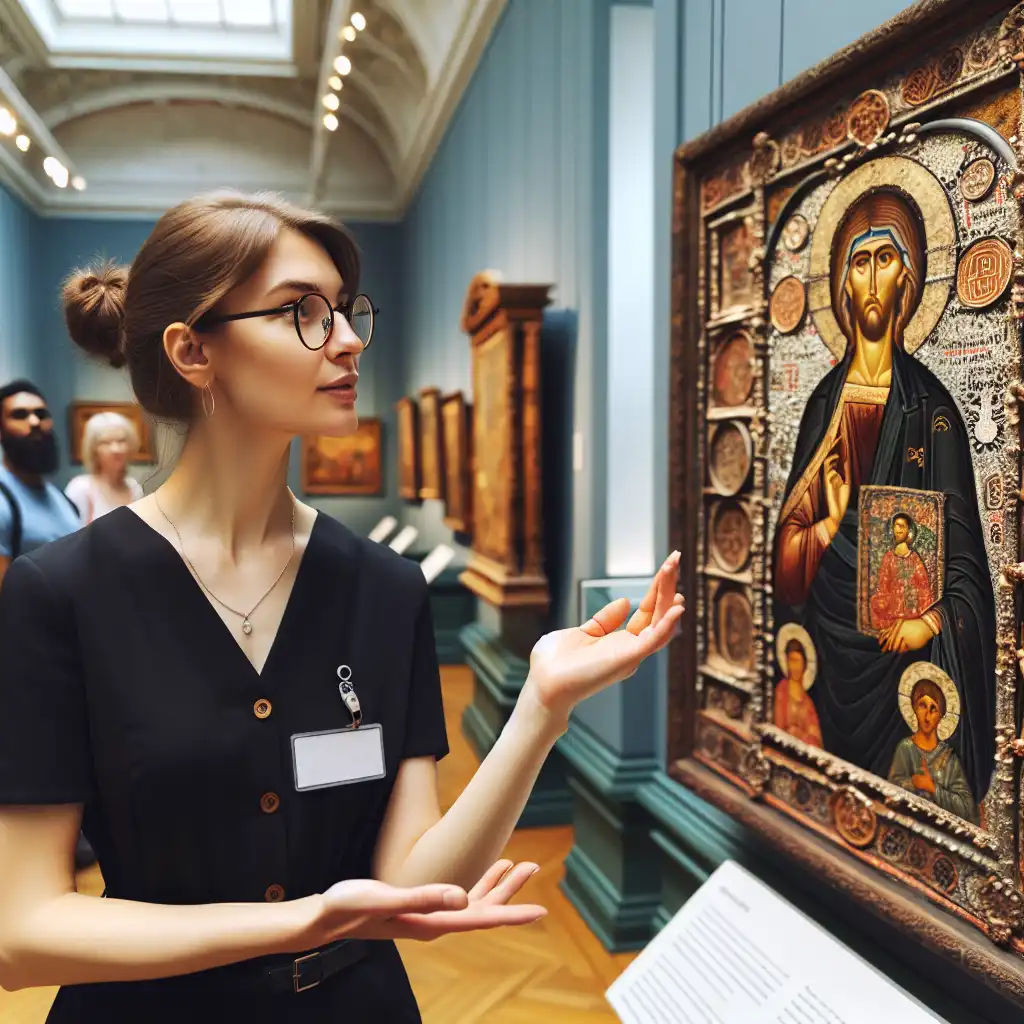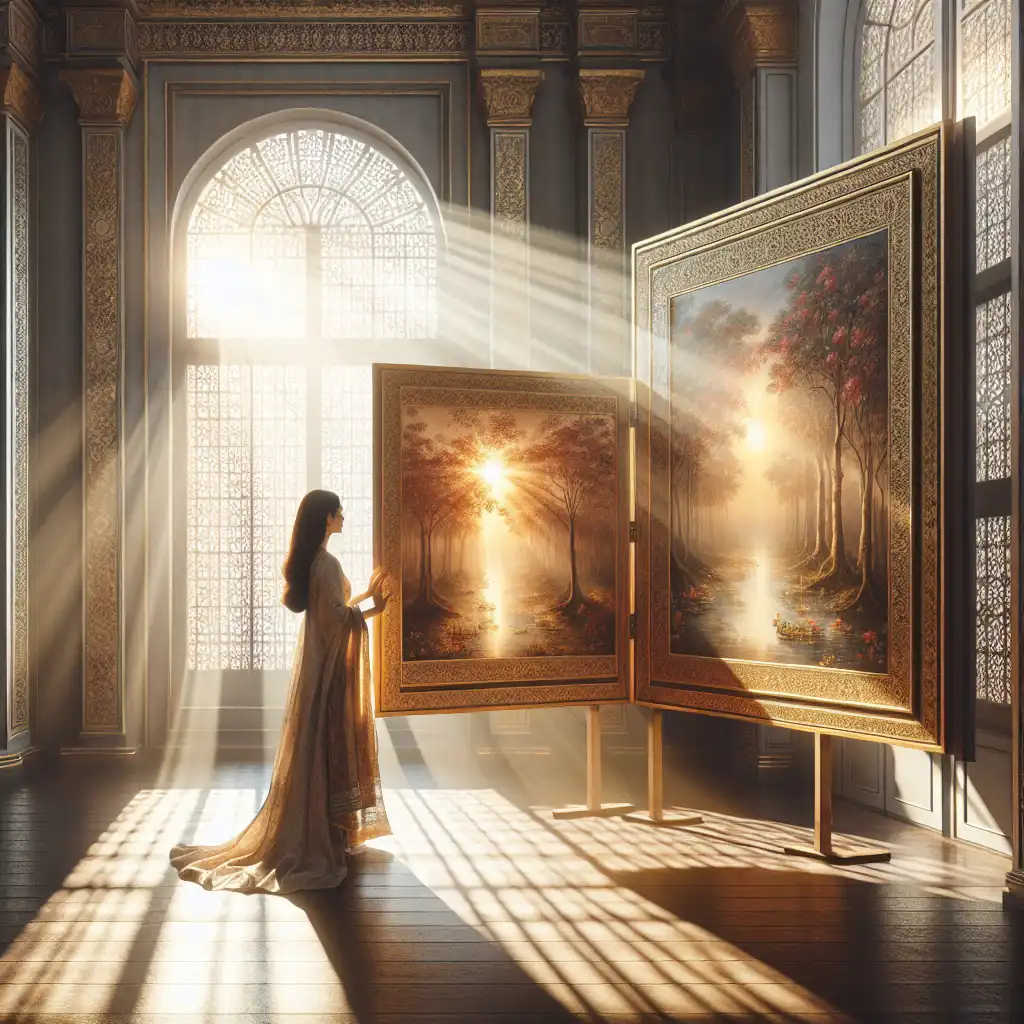
Diptych
Art Context
Diptych is often used in discussing classical, medieval, and Renaissance art forms.  The tour guide explained that this diptych dates back to the Byzantine period.
The tour guide explained that this diptych dates back to the Byzantine period.
Physical Connection
In its original sense, diptychs are physically connected, like a book.  She admired how the diptych panels opened smoothly on their hinges.
She admired how the diptych panels opened smoothly on their hinges.
Matching Set
The two parts of a diptych are designed to complement or relate to each other closely.  Each painting in the diptych depicted the seasons of winter and summer.
Each painting in the diptych depicted the seasons of winter and summer.